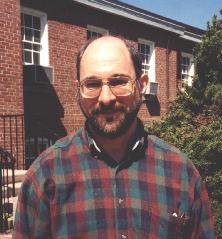Modeling Photodetectors Using the Drift-Diffusion Equations for RF-Photonics Applications
Hosted By: Photonic Detection Technical Group
15 July 2021 10:00 - 11:00
Eastern Time (US & Canada) (UTC -05:00)Photodetectors often limit the performance of RF-photonic systems. Signal distortion at high powers and shot noise at low powers can limit the dynamic range. Modeling photodetectors with sufficient accuracy and efficiency to make design optimization possible is a challenge. Join the OSA Photonic Detection Technical Group for this webinar with Curtis Menyuk presenting work done at the University of Maryland Baltimore County in modeling photodetectors and outlining future work aimed at using intelligent optimization of the device parameters.
The webinar will discuss the University of Maryland Baltimore County’s work developing models based on the drift-diffusion equations in collaboration with researchers at the Naval Research Laboratory. These models provide an excellent tradeoff between accuracy and efficiency. These models have been modified to include many important real-world effects and have demonstrated excellent agreement with experiments when the photodetectors operate in continuous-wave and pulse modes for both p-i-n and modified uni-travelling-carrier (MUTC) photodetectors.
Subject Matter Level: Intermediate - Assumes basic knowledge of the topic
What You Will Learn:
- How the drift-diffusion can be used to accurately and efficiently model photodetectors for RF-photonics applications
- What has been done to date to model p-i-n and MUTC photodetectors using the drift-diffusion equations
- Optimization approach
Who Should Attend:
- Anyone interested in the physics of photodetectors for RF-photonics applications
- Anyone interested in computational modeling of RF-photonic detectors
About the Presenter: Curtis Menyuk, University of Maryland Baltimore County
 Dr. Curtis R. Menyuk has been a professor at the University of Maryland Baltimore County (UMBC) since 1986 and is currently in the Computer Science and Electrical Engineering Department. During this period he has worked or consulted at large companies, startup companies, and for the US Department of Defense. He is a fellow of the American Physical Society, the Optical Society, and the IEEE. He is the 1996–1999 UMBC Presidential Research Professor, a 2008–2009 JILA visiting fellow, the winner of the 2013 IEEE Photonics Society William Streifer Award, and a 2015–2016 winner of the Humboldt Foundation Research Award. His research group at UMBC specializes in modeling of photonic systems, and the equations and algorithms that his group has devised are widely used in the photonics community.
Dr. Curtis R. Menyuk has been a professor at the University of Maryland Baltimore County (UMBC) since 1986 and is currently in the Computer Science and Electrical Engineering Department. During this period he has worked or consulted at large companies, startup companies, and for the US Department of Defense. He is a fellow of the American Physical Society, the Optical Society, and the IEEE. He is the 1996–1999 UMBC Presidential Research Professor, a 2008–2009 JILA visiting fellow, the winner of the 2013 IEEE Photonics Society William Streifer Award, and a 2015–2016 winner of the Humboldt Foundation Research Award. His research group at UMBC specializes in modeling of photonic systems, and the equations and algorithms that his group has devised are widely used in the photonics community.
